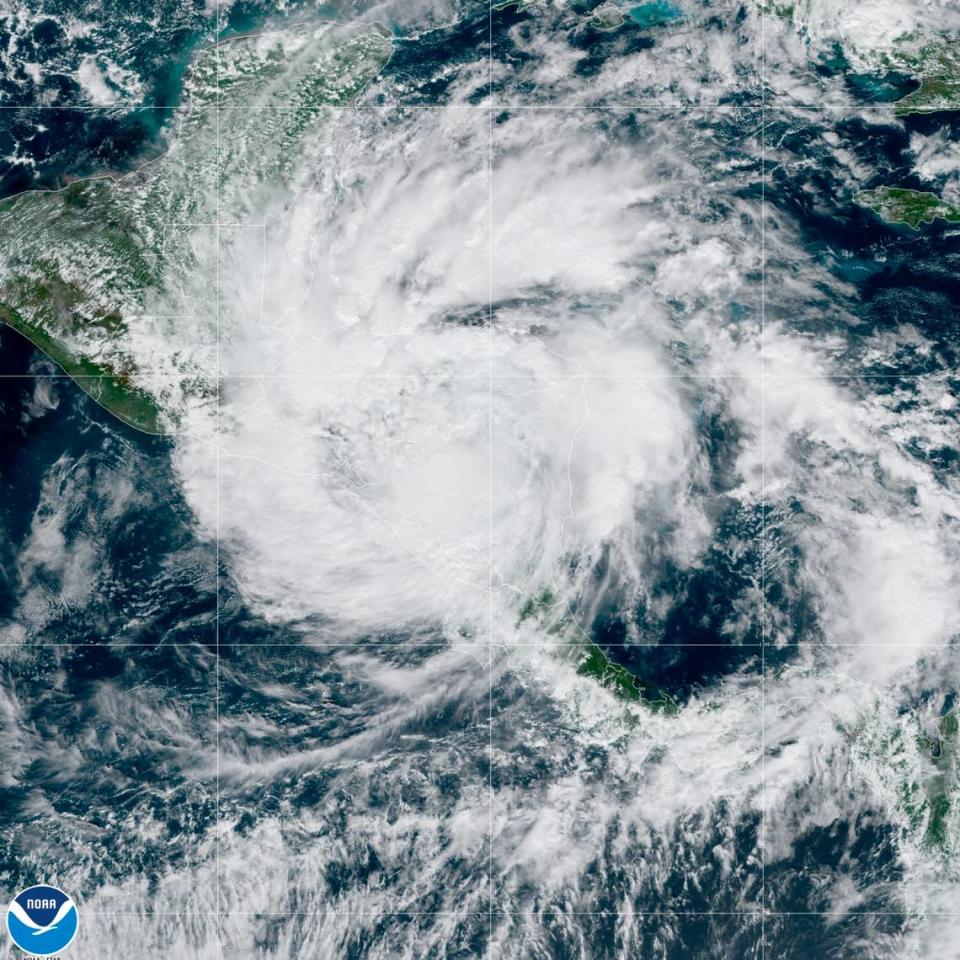Hurricane Iota pounds Nicaragua and Honduras, and nearly wipes out a Colombian island
Hurricane Iota, the strongest storm ever recorded in the Atlantic basin this late in the year, crashed into Central America late Monday night as a Category 4, delivering massive devastation to the indigenous city of Puerto Cabezas and surrounding towns in northeastern Nicaragua. It also barreled through a small Colombian archipelago along the way, leaving behind almost utter destruction.
The Central American toll from Iota remained unclear Tuesday as officials scrambled to help. However, Colombia confirmed at least one death.
The National Hurricane Center predicts the torrential rain and life-threatening gusts will continue in the region until later this week, increasing the risk of catastrophic landslides, storm surges, and floods.
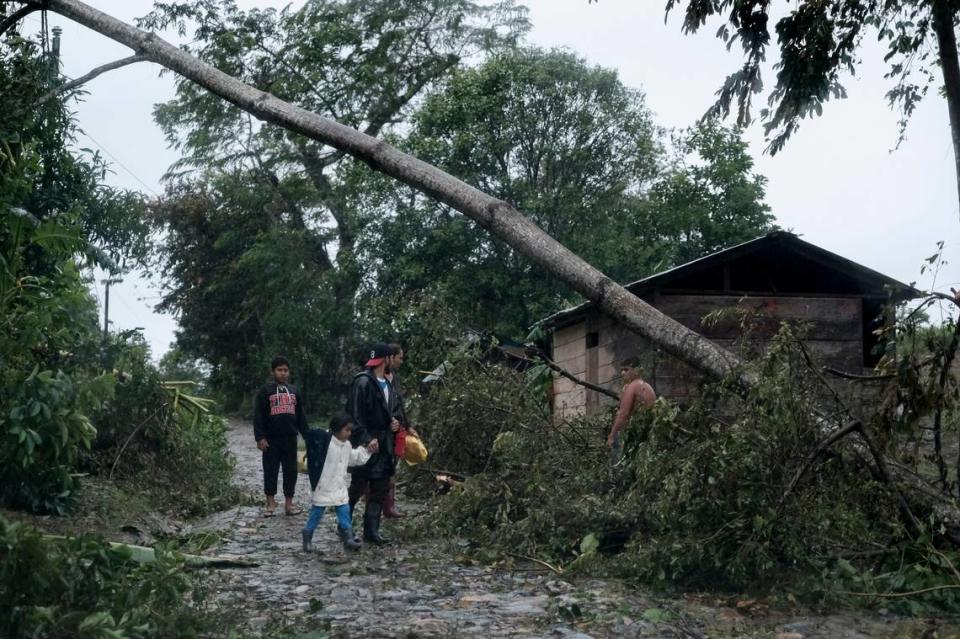
Following an almost identical trajectory to Hurricane Eta, Iota made landfall only about 15 miles from where its twin storm landed on Nov. 3, just 13 days before, with winds around 155 mph.
As of Monday, the Honduran government reported Eta affected more than 3 million people and killed at least 77. Meanwhile, Nicaraguan authorities said that over 1,000 homes had been affected and at least two people were killed.
A mother still searching for her son in Nicaragua
Puerto Cabezas woke up Tuesday to zinc sheets flying off rooftops, stormwater flooding roads and homes, and crumpling electric posts and palm trees. The port city of over 60,000, at the Atlantic coastline’s edge, is the capital of the North Caribbean Coast Autonomous Region. Power has been out since Monday afternoon, and cellphone signals have been nonexistent or erratic following Iota. However, reports of ruin began to circulate late Tuesday.
By Monday evening, two residents of Puerto Cabezas told the Miami Herald that the storm had destroyed the city’s shelters, and people were trying to survive outside as Iota raged around them. A temporary hospital, set up in a local school after Eta, was also evacuated when Iota tore the roof off.
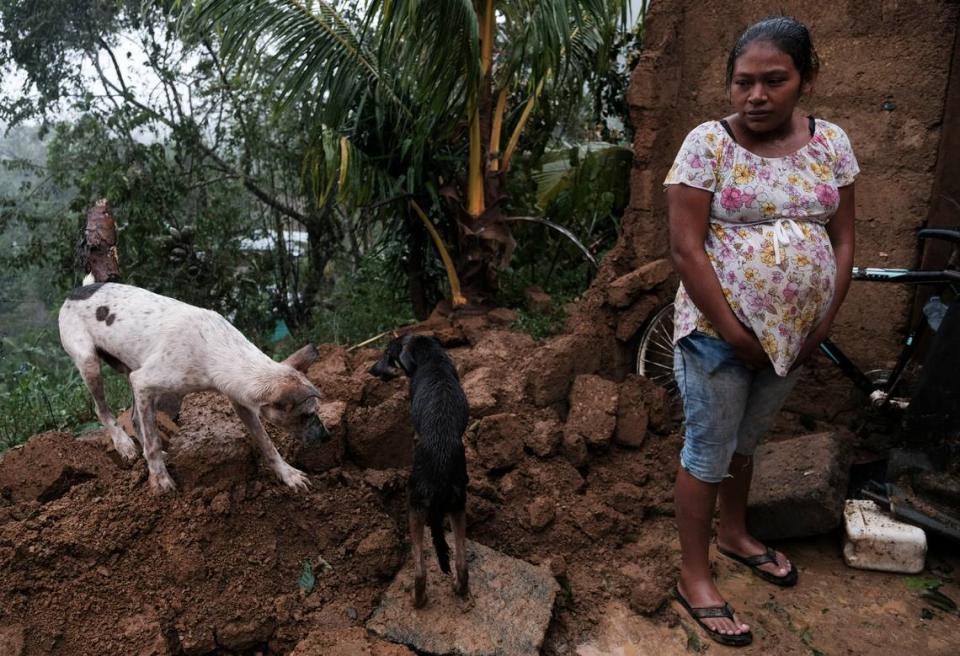
Indigenous communities from surrounding areas and from as far as Cabo Gracias a Dios, at the edge of the Honduras-Nicaragua border, had evacuated to Puerto Cabezas and other places in the autonomous region.
“There is no safe shelter here because the government has never been concerned with creating or building a safe shelter against hurricanes,” said Jairo Henriquez, a resident of Puerto Cabezas. “We are completely abandoned.”
Henriquez who helped residents evacuate before both Eta and Iota, said many people resisted relocating to the government shelters. In a live video he shared Monday morning on Facebook, Henriquez captured the gray sky and muddy waters on the coastline in the Sandy Bay Sirpy neighborhood of Puerto Cabezas. Uprooted palm trees lay by the seaside.
“Before [Iota], after Eta,” Henriquez said as he filmed the beach. “Later, we’ll film after Iota if we are still alive.”
By the time Monday night fell, Henriquez had no visibility, his home becoming an island in the devastation. In one video taken close to 10 p.m., he filmed from his balcony. Rainwater flew horizontally. In a video sent thirty minutes later, zinc sheets from the roof slammed against his home, rolling up like a caterpillar in the furious winds.
By Tuesday morning, Nancy Elizabeth Henriquez, Henriquez’s mother, said the hurricane had taken off the roof of their home.
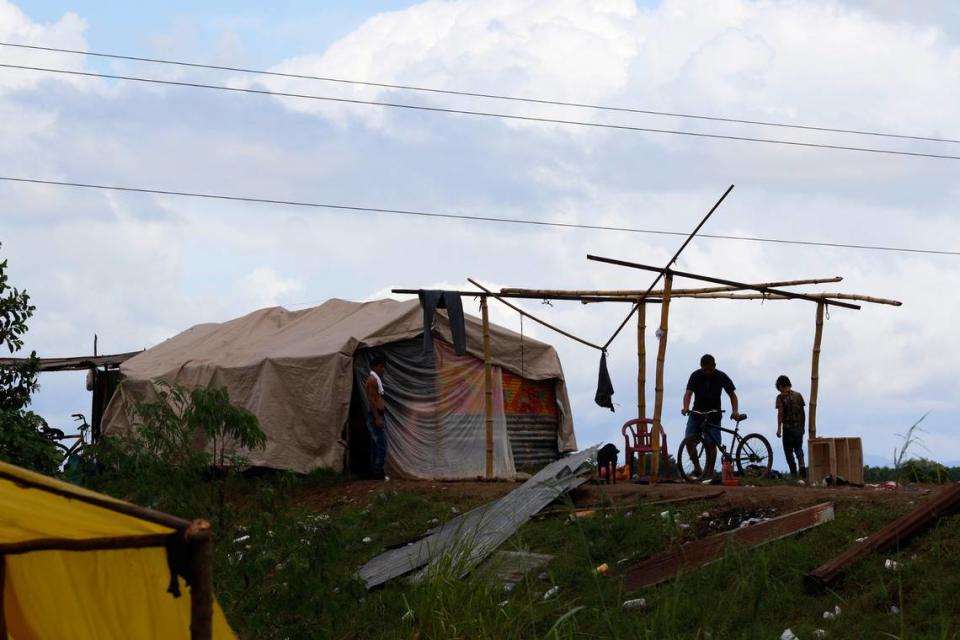
Before Iota arrived, the Henriquez matriarch, a Miskito leader, decided with other community heads that she would go to Managua to bring back resources and relief after Iota. On Monday early afternoon she drove through the heavy rain, debris and fallen trees that blocked the roads. She said she didn’t know how she had been able to arrive, but she spent the night with a friend in the Nicaraguan capital.
She estimated that over 60 people took refuge inside her concrete home during Iota. When the house flooded, she could hear their cries as she spoke with her son. She has not heard from Jairo since 1 a.m. Tuesday.
“He said to me, mama, Bilwi is being destroyed … and the hurricane is stronger than ever. Never in my life had I seen a hurricane like this,” she said. “And from there, we didn’t communicate.” Bilwi is the native name for Puerto Cabezas.
Henriquez is worried about the fate of her family, and for Puerto Cabezas, but she has faith her son is safe and helping their community through the aftermath. In the meantime, she will remain in Managua for the coming week, or until she can bring help to her native city.
“If we had all stayed there,” she said, “who was going to seek support for our people?”
Colombia: destruction in Providencia Island
Unlike Eta, which didn’t lash the area as hard, Iota slammed into Colombia’s San Andrés Archipelago, located about 230 miles off of the coast of Nicaragua. The storm primarily hit the island of Providencia, demolishing the scant infrastructure, including thousands of homes and the local hospital.
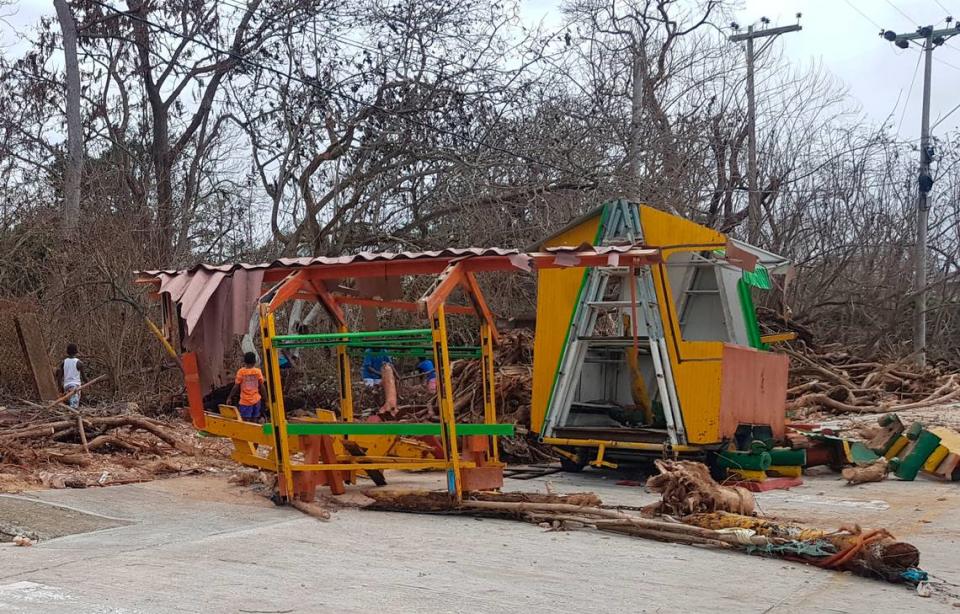
President Iván Duque sent a Colombian Navy ship with 15 tons of humanitarian aid along with rescue crews to the island Monday night. On Tuesday morning, he said he spoke to Providencia Mayor Norberto Gari Hooker, who said at least one person had died.
Duque then flew over the islands of Providencia and Santa Catalina and landed on the island of San Andrés to assess the damage. He reported Iota wiped about as much as 99% of Providencia and said storms rarely reach the western Caribbean coast of the Andean country, especially major hurricanes.
“Never in the history of this country have we dealt with a Category 5 hurricane,” he said. “But here’s Colombia united, telling Providencia that we will help.”
Juliana Escobar, a cultural manager in Antioquia, Medellín, said her family has had a house in Providencia since 1971, where she had lived for about 5 years in the 2000s.
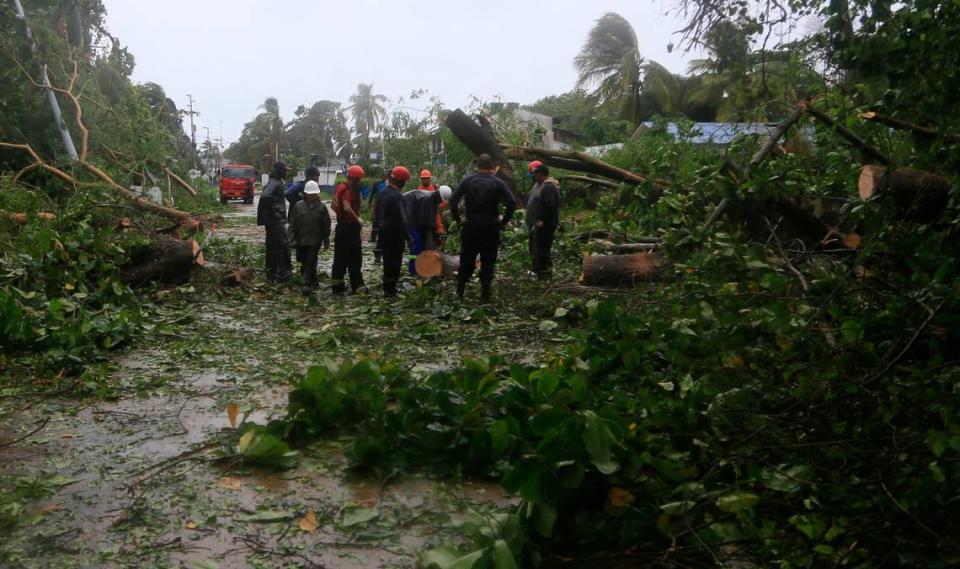
As of Tuesday afternoon, Escobar said the last time she heard from anyone on the island was at 3 a.m. Monday, when a neighbor told her a group of them had rushed into Escobar’s house because their own homes were flooded.
She said the island lost power. Without it, cellphone towers stopped working.
“That’s part of my family, and I don’t know anything about them,” she said. “The uncertainty is killing me.”
Tough days ahead in Honduras
Despite entering Honduras as a tropical storm, Iota still thrashed the eastern tropical rain forest area and brought massive rains on the northern city of San Pedro Sula.
Honduran President Juan Orlando Hernández warned the population Tuesday night that the storm would affect the country until later this week, when experts predict it will dissipate over El Salvador.
“We must be alert and forewarned, be disciplined,” he said. “A lot of rain is expected and that will cause rivers to flood from their course.”
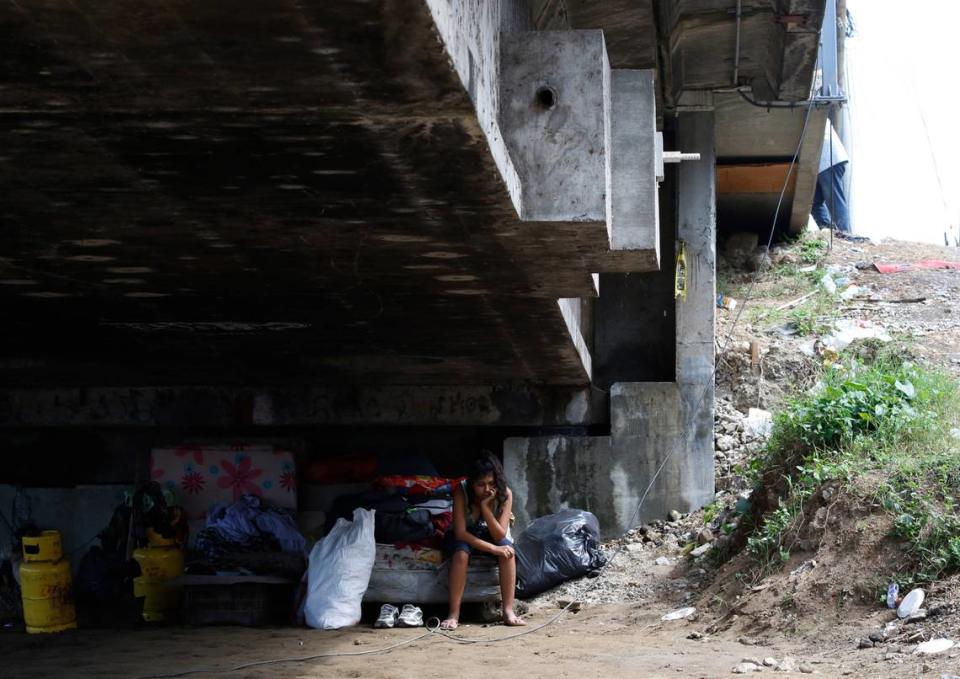
Danilo Trejo Posadas, a farmer from San Juan in La Lima in northern Honduras, said he rushed out of his home earlier this month during Eta, carried his five children one by one and placed them atop a mango tree. He then moved them to the third floor of a local school, still taking each of them by turns because he’s the only one who can swim. They all got a skin rash from the contaminated water.
The family suffered at the school for five days, watching recently buried caskets that the rain unearthed from the nearby cemetery float by. After watching the kids weep from hunger, Trejo Posadas and others decided to battle the current to find a half-dead cow, finish killing it with a machete, preparing it, and feeding it to others.
Trejo Posadas eventually went to his father’s house, located on a hill in nearby Santiago Pimienta. Still recovering from Eta, they hoped they would have better luck there with Iota. But Monday afternoon, the water rose again and they all ran to a neighbor’s house higher up in a hill, where they expected to sleep.
“We’re waiting for the water to go down,” he said. “At least we’re not wet this time around, at least not yet.”
